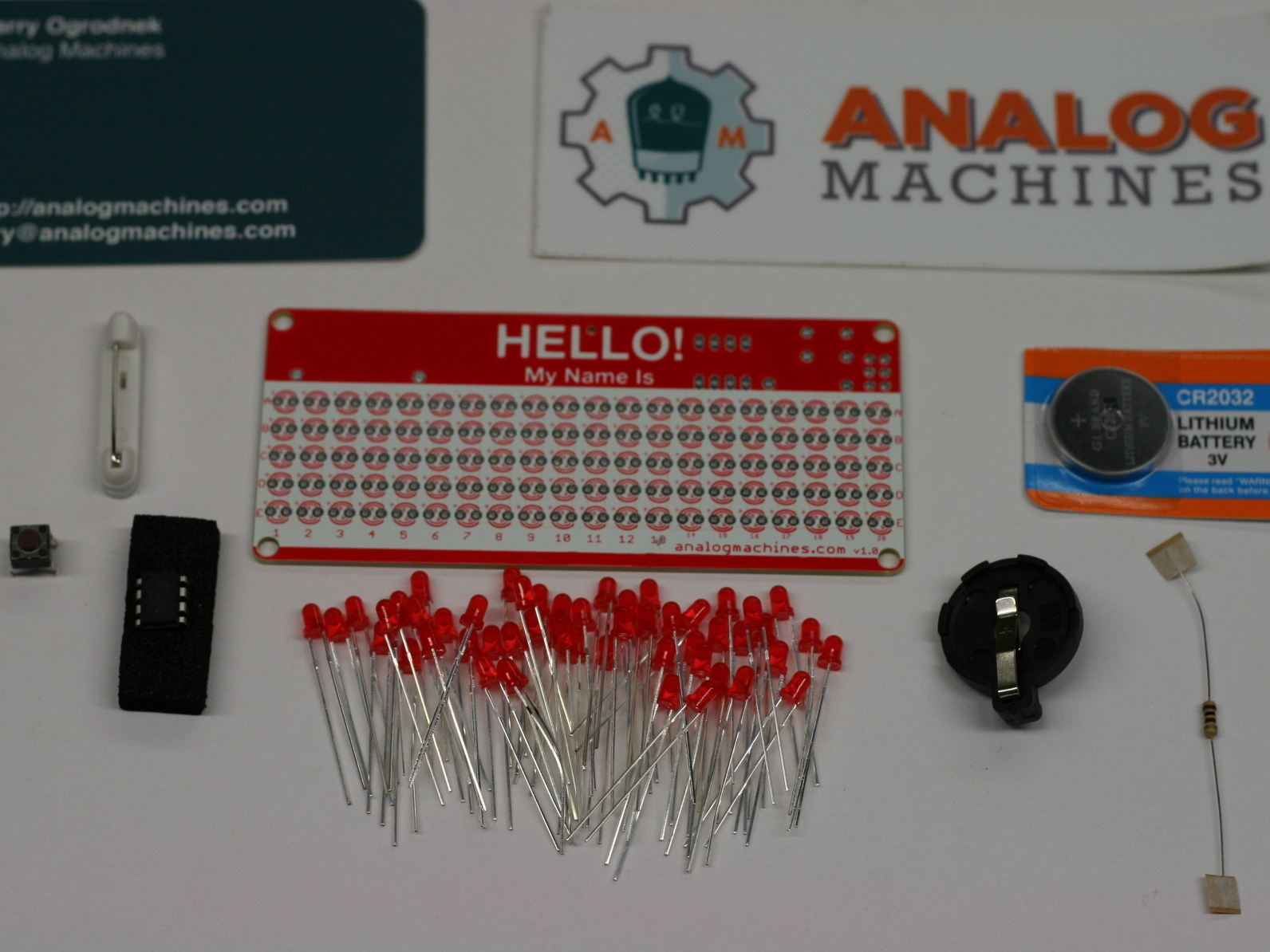After all your LEDs are in place and soldered, it’s time to move on to the microcontroller!
The IC goes into the holes marked IC1. This chip will control the various display options on your nametag.
The chip legs probably won’t fit into the holes because they are too far apart. To fix this, gently “roll” the legs on a flat surface to bend them in. Repeat this on both sides a little bit each time until the legs fit into the holes.
Pay attention to the little notch or dot on the chip. This marks the way the chip should be oriented on the PCB. The direction of the indentation or dot should match the printing on the PCB.
After the chip is inserted correctly, bend a few of the legs that stick out from the back so that the chip does not fall out when you turn the board over for soldering.
Solder the legs of the chip into place and use your side snips to trim off the excess.


